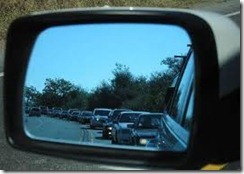
Is rustproofing your car worth it? In short, yes!
Rust is a car’s natural enemy. More than just a discoloration of metal, rust is the corrosive result of a chemical reaction between oxygen and iron. Though rust technically corrodes just the surface of iron or an iron-based alloy (such as steel), fresh iron is exposed during this process of corrosion, which in turn can become “infected” with rust. Given enough time, this cycle will repeat over and over to the point when the rust completely disintegrates the metal.
Put simply: Rusted metal is not as structurally strong as rust-free metal. Since most cars are made of metal (especially steel) we can rightfully guess that a car with a rust problem is not as structurally sound and, therefore, more dangerous than a rust-free car. Rust isn’t much of a problem for those who live in dry, arid climates. However, cars constantly exposed to wet weather, humidity and corrosive road salts are more likely to suffer from potentially disastrous rust problems.
To combat vehicle rust, many manufacturers use a variety of rust-proofing techniques to keep rust at bay. Often, rust proofing measures will include the use of galvanized steel (steel that is coated in rust-unfriendly zinc) and PVC-based undercoatings. Paint itself is also considered a rust proofing measure, as it acts like a protective barrier against the elements. Some aftermarket rust-proofing treatments -- including wax-based surface treatments -- are also available.
RUST PROOFING ON AM
Though there is no way to completely eliminate the threat of rust, rust proofing is the best way to extend the life of a vehicle and all its components. As we mentioned earlier, rust will structurally weaken any piece of metal it has infected, so rusty car parts are often dangerous car parts. Rust proofing helps ensure that our vehicles won’t suddenly disintegrate as we drive down the freeway.RUST PROOFING FACT
Sometimes, the best way to rust proof a car is to keep it clean. Waxing your car does more than just make it look good; a good wax job will serve as an extra layer of protection between the sheet metal and oxidizing elements like oxygen, salt and water. For those who live in snowy climates, not tracking massive amounts of snow (which will melt and form pools of water in a vehicle’s crevices) into the car is a good way to prevent rust build-up. Though it’s tough to do in the winter, keeping a car’s undercarriage free of road salts will also extend the life of any factory-engineered rust-proofing methods. A quick rinse of the undercarriage can do a lot of good.
Read more: http://www.askmen.com/cars/keywords/rust-proofing.html














